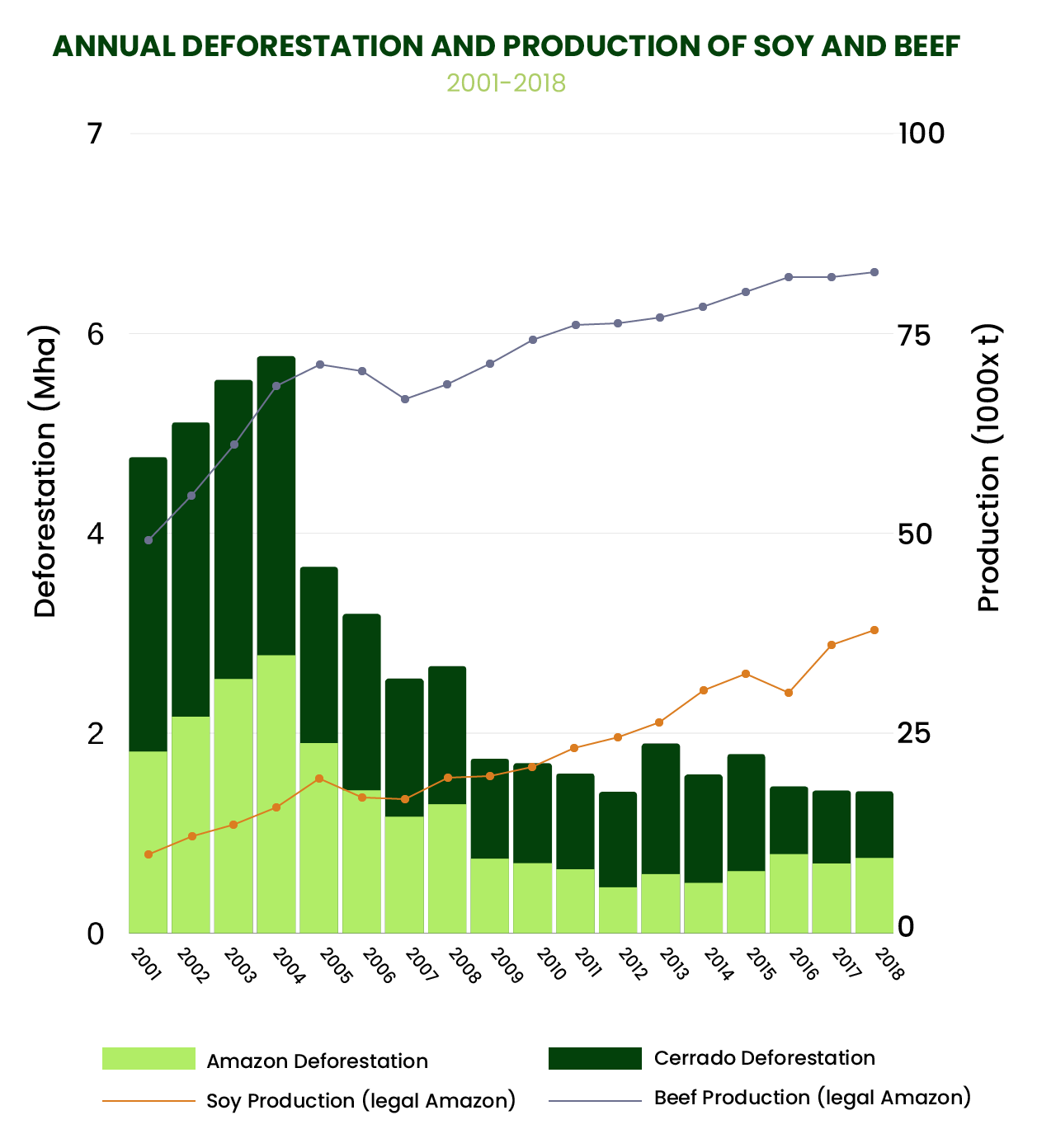
It is possible to meet the rising demand for soy and protect remaining natural habitats in South America from destruction by growing soy on cleared land that is abandoned or degraded, while also investing in productivity increases, in order to produce more soy on the same amount of land. Productivity improvements in the cattle sector would also help to free up more land for soy production.
While soy is sometimes a direct driver of deforestation (i.e. the primary motivating factor for clearing land), much of soy-driven deforestation is indirect: native vegetation is first converted for other uses - usually cattle pasture - and later converted to soy, which offers higher revenue per hectare than ranching. This often occurs as part of a process of land speculation, where extensive cattle ranching is one of the easiest ways to secure land ownership (demonstrating active use of the land in order to avoid expropriation for land reform), with pasture sold on at a profit as the cropland frontier advances.1 Ranchers then move into new frontier regions, exacerbating deforestation.
But it is possible to disrupt this cycle and halt the destruction of native vegetation in South America while still meeting the rising demand for soy. There are enormous areas of land in threatened areas of South America that have already been cleared but are degraded and/or abandoned.2 As soy grows on relatively poor soils, these areas can be used for soy production. Progress has been made in this respect. Data from the Brazilian National Institute for Space Research show, for example, that annual deforestation in the Amazon and Cerrado regions of the legal Amazon states of Brazil fell by more than 70%, and soybean production increased by 130%, between 2004 and 2017 (see figure 1).
Researchers at the University of Wisconsin, Madison, estimate that there are 42.5 million hectares of cleared land in the Cerrado that are suitable for new soy, in close proximity to existing soy farms, and close to existing soy silos. Using this land could allow soy area in the Cerrado to triple without destroying any more habitat.3 The same study estimated that in the Amazon, cleared land suitable for soy covers more than six times the land area planted with soy in 2014. Innovative tools, such as a free online territorial intelligence tool designed by Agroideal, can help farmers to identify productive regions close to their farms that can be converted with low socio-environmental impact. International financing for avoided deforestation (e.g. the Green Climate Fund and International Civil Aviation Organization) can help producers to prevent further deforestation.
Efforts to increase soy productivity, so that more soy can be produced on the same area of land, will also help. This requires investments in the expansion of technical assistance, facilitated access to improved technology and cultivars, and subsidised credit to finance upfront costs and encourage producers to adopt new practices to increase soy outputs rather than expand onto new land.4
Synergistic changes in the livestock sector would help to lower soy deforestation. If ranchers increase productivity (for example by improving degraded pastures and increasing stocking rates), this would help to free up pasture land for conversion to soy production.5 According to one study, productivity improvements of just 20% on Brazil’s pastures would allow Brazil to meet demand for meat and other products until at least 2040, without further conversion of natural habitat.6> This will require targeted agricultural credit and extension services to help ranchers improve animal and pasture management.7 Incentives for the livestock sector to reduce its dependency on soy as animal feed, for example by increasing its use of food waste, or by adopting alternative protein meals, such as ones based on insects or algae, would also help to reduce the high demand for soy to feed livestock.
6 Strassburg, B. B. N., et al. 2014. When enough should be enough: Improving the use of current agricultural lands could meet production demands and spare natural habitats in Brazil. Global Environmental Change, Vol. 28, 84-87.
